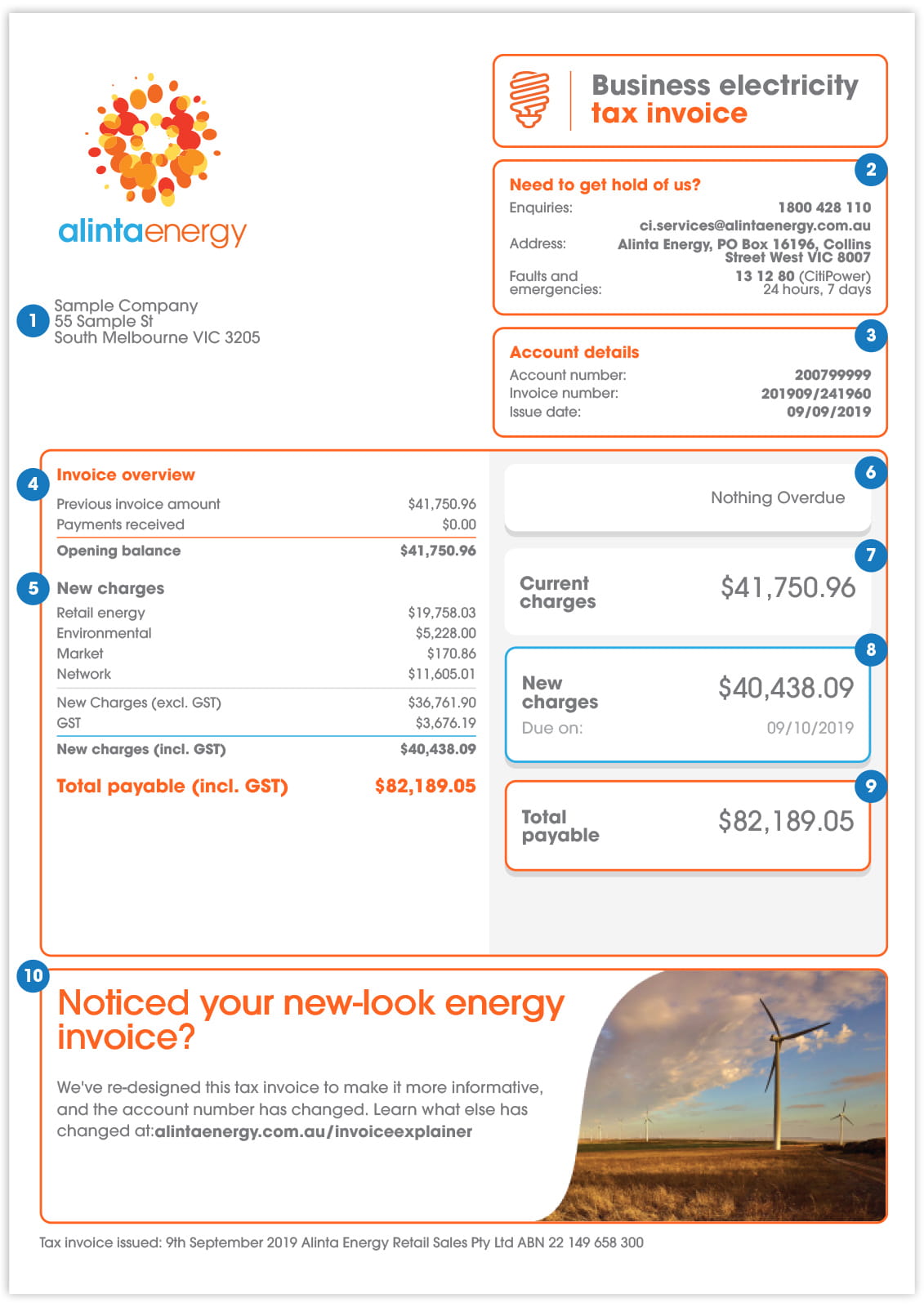
How to read your bill
Need help understanding your bill? Here's everything you need to know to help manage your energy plan.

Understanding your bill is the first step to help manage your gas expenses. We want to keep things simple by explaining a bit about your gas bill and help reduce your household costs.
There can be a lot of numbers to keep in mind, so knowing where to start with your gas bill can be tricky. We’ve broken it down into the most important sections for you to be aware of.
The front page of your bill shows your details, as well as a high-level breakdown of the amount due on your bill.
1. Name and billing address
At the top left of the front page, you’ll see your name and address. This is the mailing address, which might not always match the “supply address”. The supply address is the property that you’re being billed for.
2. Account number and amount due
To the right of where you find your billing details you’ll find the amount due and the due date. This is the total amount owing, with any credits or outstanding balances already factored in.
This is also where you’ll find your account number. If you give us a call to discuss your bill it’s best to have this ready.
3. Account balance
Below your address will be a breakdown of your previous and current payments, adding up to the total amount due.
Below this, you’ll have a useful graph showing how your usage compares to previous bills, as well as how it compares to the same bill from the year before. This can be a great way of helping you keep track of how much gas you’re using bill to bill. It's not uncommon for bills to spike in winter, so if you have gas heating you might consider cutting back on using it next year.
You’ll also see your daily usage, expressed in average daily units. Knowing how much you use in a day on average can be another great way of keeping on top of your gas consumption.
4. Payment options
We offer a variety of ways for you to pay your bill. If you want to take the stress out of billing you can switch to direct debit or bill smoothing – find out here if this is the right choice for you.
If you prefer a little more control over your payments you can pay by credit card, BPAY, or even by post or at the post office.
The back page of your bill gives you the detail of how your gas charges are calculated. This is where it can get a bit tricky, so we’ll unpack it for you.
At the top of the page you’ll find the details of the meter reading used to calculate your bill.
Below this, you’ll find a more detailed breakdown of how the current charges are calculated based on your meter readings.
If you’re getting one of our great gas deals, you’ll also find your discount shown here. This will also show how much your deal is saving you on gas.


If you have any questions about your account or you would like to report a fault, you can call us on one of the numbers listed at the top of your bill or contact us.
The address in the top-left corner is the postal address the bill is sent to, and may be different to the supply address. The account is addressed to the person(s) registered as the account holder(s). If you need to change your postal address or the account holder's details visit the Update your details page for information.
Your account number is located in the top-right corner on your bill. For faster service, please have this number handy whenever you call us.
The payment due date is listed above the amount due on your bill. Unless you've arranged an alternative payment arrangement with us, you'll need to pay your account in full on or before this date.
The amount due shown on your bill is the full amount you need to pay on or before the due date.
The date range indicates the period of time for which your account was calculated.
Here, you'll find your average daily gas consumption, average daily cost and the service address where the gas was used.
The available payment methods are located at the bottom on the front and back of your bill.
Your payment number is located at the bottom right of your bill. You'll need to have your payment number when you make a payment.
You'll find your most recent meter reading and your meter number on the back of your bill, at the top.
This section on the back of your bill details all of the charges used in calculating your account.
Your gas consumption is measured in Cubic Meters (the difference in meter reads) and converted to Energy Units in order to bill you.
If you're on our Fair Go product, the discount and the amount you've saved will be listed here. The amount saved is deducted from your Residential Gas Usage charge and reflected in the current charges due.